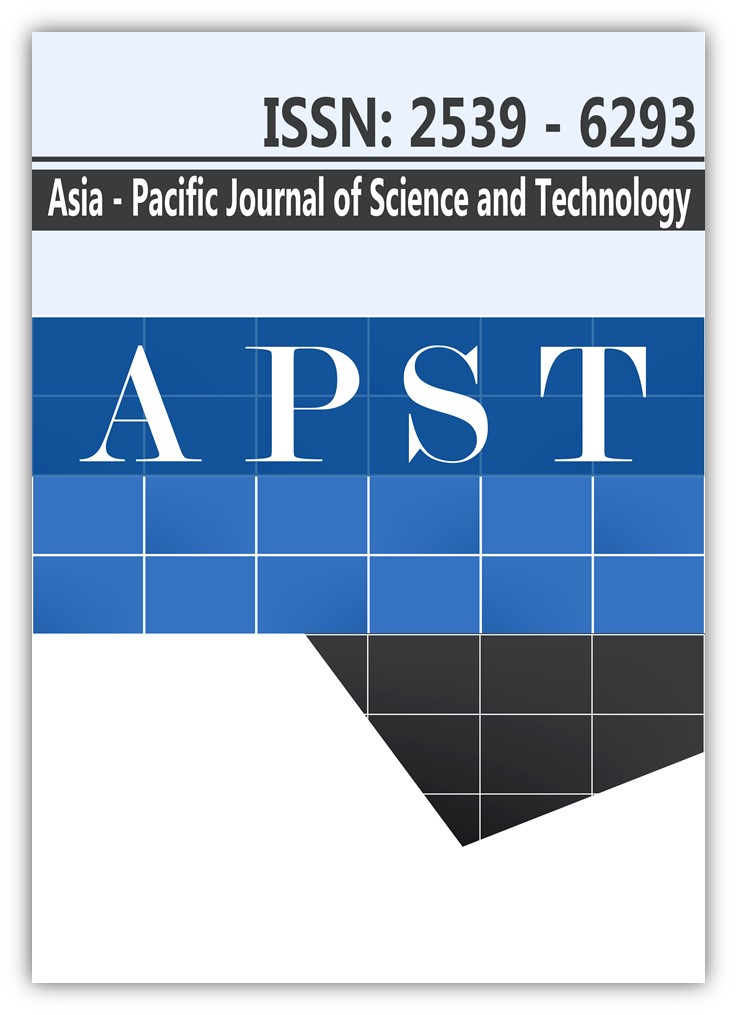Recent climatic trends in Trinidad and Tobago, West Indies
Main Article Content
Abstract
Seawater level rise is one of the most prevalent adverse environmental impacts of the ongoing global warming process. Island nations are more vulnerable to the impact than the land masses. Two such islands impacted by global warming are Trinidad and Tobago, located in the Atlantic Ocean.However, there is minimal related research in this area in the context of the impact of climate variability. Therefore, it is timely and interesting to assess the climatic trends in islands that are extremely vulnerable like Trinidad and Tobago. This paper presents a detailed non-parametric statistical analysis for well-known climate gauges in Trinidad and Tobago, West Indies. Mann Kendall and Sen’s slope tests were carried out on two identified rain gauges in Trinidad and Tobago. Monthly climatic data including cumulative rainfall and the average of the minimum and maximum atmospheric temperatures were processed to identify the trend analysis using the above stated non-parametric tests. Important results are found from the analysis; most importantly, there is no significant impact on the rainfall in the area due to the climate variability over 30 years. However, the atmospheric temperature behaves in a different way and it has a rising pattern across the total 12 months studied. This can be seen for both the minimum and maximum atmospheric temperatures. Therefore, the warm months are becoming warmer and the cold months are becoming less cold. This is a critical finding that must be considered for any future planning processes.
Article Details

This work is licensed under a Creative Commons Attribution-NonCommercial-NoDerivatives 4.0 International License.
References
Lockwood JG, Gregory S, Scorer RS. Climate Change: The IPCC Scientific Assessment (1990). Cambridge: Cambridge University Press;2007.
Haigh JD. Climate change 1992: the supplementary report to the IPCC scientific assessment. Cambridge: Cambridge University Press; 1992.
Singh B. Climate-related global changes in the southern Caribbean: Trinidad and Tobago. Glob Planet Change. 1997;15(3-4):93-111.
Karmalkar AV, Taylor MA, Campbell J, Stephenson T, New M, Centella A, et al. A review of observed and projected changes in climate for the islands in the Caribbean. Atmosfera. 2013;26:283-309.
Stephenson TS, Vincent LA, Allen T, Van Meerbeeck CJ, Mclean N, Peterson TC, et al. Changes in extreme temperature and precipitation in the Caribbean region, 1961-2010. Int J Climatol. 2014;34(9):2957-2971.
IPCC. Climate change 2013: the physical science basis. Cambridge: Cambridge University Press;2013.
Beharry SL, Clarke RM, Kumarsingh K. Variations in extreme temperature and precipitation for a Caribbean island: Trinidad. Theor Appl Climatol. 2015;122:783-797.
IPCC. Climate change 2007: impacts, adaptation and vulnerability. Cambridge: Cambridge University Press; 2007.
IPCC. Managing the risks of extreme events and disasters to advance climate change adaptation. Cambridge: Cambridge University Press; 2012.
Pulwarty RS, Nurse LA, Trotz UO. Caribbean Islands in a changing climate. Env Sci Pol Sustain Dev. 2010;52:16-27.
Sahay R. Stabilization, debt, and fiscal policy in the Caribbean. In: International Seminar Developmental Challenges Facing the Caribbean; 2004 June 11-12; Port-of-Spain, Trinidad and Tobagco.2004. p. 1-43.
Neelin JD, Munnich M, Su H, Meyerson JE, Holloway CE. Tropical drying trends in global warming models and observations. PNAS. 2006;103(16):6110-6115.
McLean NM, Stephenson TS, Taylor MA, Campbell JD. Characterization of future Caribbean rainfall and temperature extremes across rainfall zones. Adv Meteorol. 2015;425987:1-18.
Beharry SL, Clarke RM, Kurmarsingh K. Precipitation trends using in-situ and gridded datasets. Theor Appl Climatol. 2014;115:599-607.
Stone RJ. Changing seasonal rainfall patterns in Trinidad: Myth or Reality ? WIJE. 2002;23:9-16.
Jones PD, Harpham C, Harris I, Goodess CM, Burton A, Centella AA, et al. Long-term trends in precipitation and temperature across the Caribbean. Int J Climatol. 2016;36:3314-3333.
Mann HB. Non-parametric tests against trend. Econometrica. 1945;13:245-259.
Hirsch RM, Slack JR, Smith RA. Techniques of trend detection for monthly water quality data. Water Resour Res. 1982;18:107-121.
Lawin AE, Niyongendako M, Manirakiza C. Solar irradiance and temperature variability and projected trends analysis in Burundi. Climate. 2019;7(6):83.
Perera A, Rathnayake U. Impact of climate variability on hydropower generation in an un-gauged catchment: Erathna run-of-the-river hydropower plant, Sri Lanka. Appl Water Sci. 2019;9:57-67.
Sen PK. Estimates of the regression coefficient based on Kendall’s Tau. J Am Stat Assoc. 1968;63:1379-1389.
Ahmad I, Tang D, Wang T, Wang M, Wagan B. Precipitation trends over time using Mann-Kendall and Spearman’s rho tests in Swat River Basin, Pakistan. Adv Meteorol. 2015;431860:1-15.
Stefanidis S, Stathis D. Spatial and temporal rainfall variability over the mountainous central Pindus (Greece). Climate. 2018;6:75.
Tobago: Ministry of the Public Utilities. Trinidad and Tobago Meteorological Service [Internet]. Piarco: 2019 [cited 2019 Jul 4]. Available from: https://www.metoffice.gov.tt/
Spiers JA, Oatham MP, Rostant LV, Farrell AD. Applying species distribution modelling to improving conservation-based decisions: a gap analysis of Trinidad and Tobago’s endemic vascular plants. Biodivers Conserv. 2018;27:2931-2949.
Darsan J, Asmath H, Jehu A. Flood-risk mapping for storm surge and tsunami at Cocos Bay (Manzanilla), Trinidad. J Coast Conserv. 2013;17:679-689.


